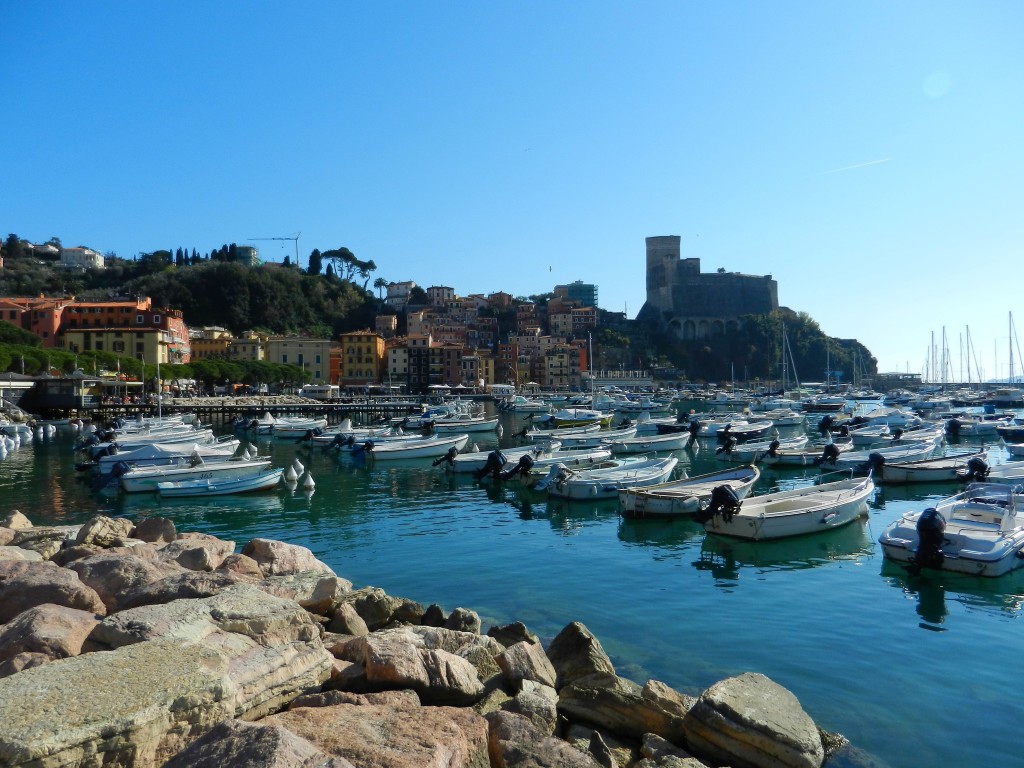
After ecstatic hugs and a flurry of gleeful giggles, the whole family piled into the rental van and away we went! There were some hairy moments puzzling out the toll booths (our van had a Goldilocks-situation where the upper toll was too high but the lower one was too low), but soon we rolled into the sun-soaked coast of the Italian Riviera. We were staying in the Liguria region (just north of Tuscany) where, fun fact, pesto originates (mmm, basil)! My parents had found a beautiful apartment with a balcony overlooking Lerici, our hometown for the next several days. Nearby the incredible Cinque Terre was waiting for us, but for now it was time to bring out the wine! Pouring our first glasses of Tuscan wine, we clinked glasses to our family vacation and watched the sun setting over the harbour.
Lerici’s convenient proximity to the Tuscan border makes it an easy drive between the many picturesque villages and towns of the two regions. So, in spite of its prime location close to Tuscany and Liguria (not to mention Cinque Terre), where are all the foreign tourists? While Lerici is just starting to find its place among the popular destinations for foreign tourists, it has been a long time favourite for Italians. For centuries Lerici has attracted artists seeking solitude, and more recently the city dwellers seeking a nice tan (check out this great article in NY Times). So while tourism is seeping in, things are still surprisingly low-key and a little Italian will definitely help you get by.
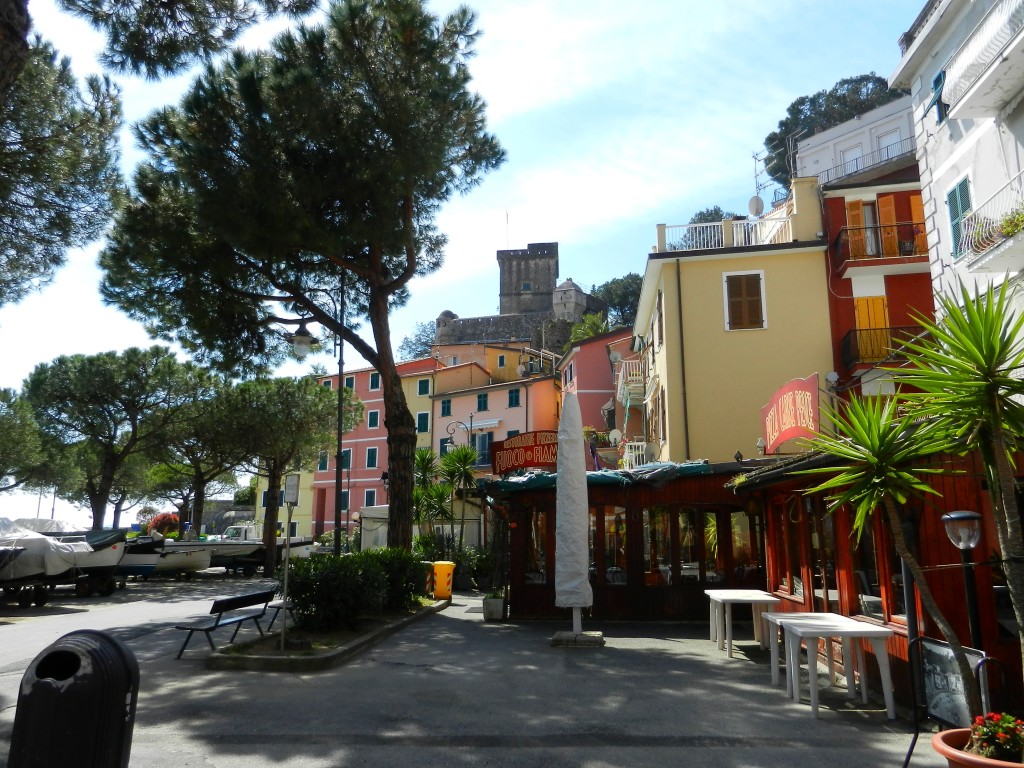
We spent our first, laid-back day strolling through the harbour front and soaking in the coastal ambience. A bustling local market filled the main square with fresh vegetables, cheeses, and wines while the gelaterias were churning out fruity ice creams. The harbour is dominated by a steep hill capped with an impressive medieval castle (because if they have one across the bay, we need one too!). Offering the best views of Lerici, the staircase is worth the climb or you can take the alternate route through the back alleys of town (which is a lot easier on the legs). We can’t forget about the lovely beaches either. Beautiful, golden sands that stretch along most of the distance between San Terenzo and Lerici with clear, emerald-hued waters sparkling in the sun. Heavenly.
One of the reasons we had decided to stay in Lerici was the ease it offered in visiting Cinque Terre. If you have Pinterest, you have probably seen pictures of Cinque Terre at one point or another as it’s one of those dramatic, coastal places people dream of visiting. Cinque Terre is comprised of five villages (hence, “cinque”) that were built along the steep, coastal cliffs by hill-dwellers fleeing the harassment of barbarian attackers. The villages are a chaotic, cobbled collection of pastel-hued homes, parish churches, and stone defences that are easy to lose yourself in. The surrounding cliffs have been diligently chiselled, chopped, and carved into the complex system of gardens and farms that have sustained the villagers over the last two millennia. Once these villages were isolated communities, but today they are linked to each other and the outside world via regular trains and ferries.
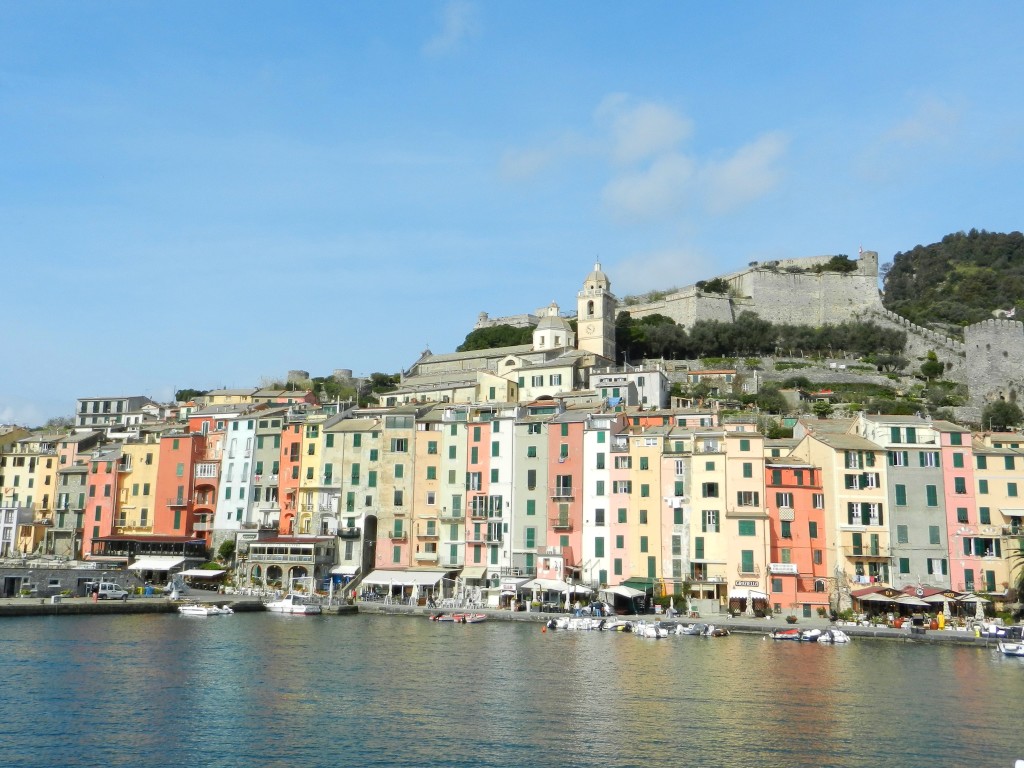
Cinque Terre has long been on my list of places I needed to see in Italy, so I was really excited that we were going to go as a family. We opted to take the ferry from Lerici to Riomaggiore, the closest of the five towns, and work our way further out via the hiking paths and trains. The inhabitants of Riomaggiore originally came from a nearby valley, but seeking a better place to grow their grapevines and olive trees they came to the coast. Looking at Riomaggiore’s houses, it reminded me of a pomegranate being broken open, with all the seeds wanting to tumble out into the water. After docking (can it be called that when it’s a rocky spur?) we meandered up Via Colombo, the main street, taking in the mouth-watering smells of fried fish and coffee. We eventually made our way over to the castello at the top of Cerricò hill, and got some of my favourite birds-eye view shots of the little town.
We were hoping to walk the coastal path between at least a few of the towns, as the paths are supposed to be an incredible experience. The walk between Riomaggiore and Manarola, the Via dell’Amore, is supposed to be especially beautiful and romantic. Unfortunately, while many of the upper paths were still open, a lot of the lower coastal paths were still closed due to damage from a horrific 2013 flood (check here for updates). I was a bit crushed to be honest, but these things need to be kept in perspective; I can’t even imagine what it was like for locals at the time of the flooding.
The trains between the villages are regular and quick (timetables) or you can get a ferry pass for a more scenic route. The villages have a lot in common, but each has something special to offer. Our next stop was Manarola, literally a three minute train ride from Riomaggiore. Boasting the most grapevines of the five villages, be sure to try Manarola’s time-perfected Sciacchetrà wine. Manarola is pretty small, and my favourite area was the walking path curving out of the port. As you start to get to the curve of the cliffs you have those incredible views you see in all the photographs of Manarola, with the colourful houses stumbling over each other up the hill and the rocky marina below.
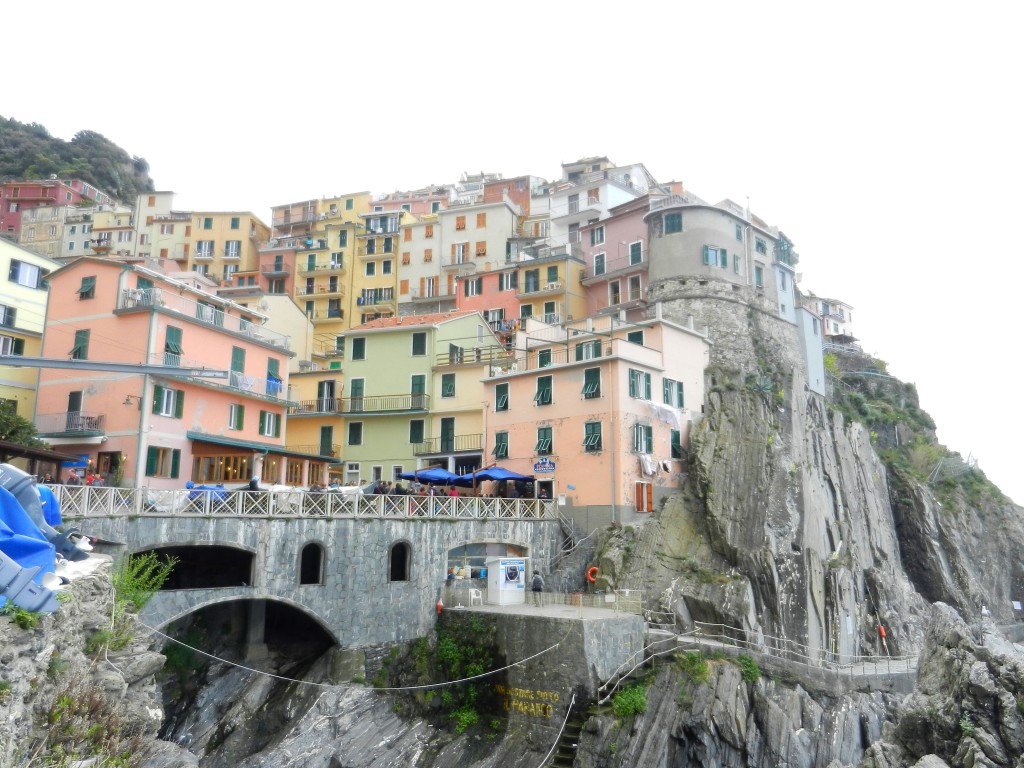
Next up, Vernazza. We caught the ferry between Manarola and Vernazza and I’m really glad we did. Technically Corniglia is next in line after Manarola, but as it’s a little more time-consuming (read 365 brick stairs) to visit we unfortunately had to pass right on to Vernazza. We did get pictures from the ferry though! Approaching Vernazza via the ferry makes for a pretty dramatic first impression. Most of the village is tucked behind a steep cliff forming the only natural, protected harbour in the Cinque Terre villages. As the ferry is coming up to the cliff you can see the lookout tower of Doria Castle guarding the upper line of houses peeking over the hilltop. As you round the cliff the village bursts into sight, with the bustling Piazza Marconi welcoming each boatload of tourists into its waiting restaurants and shops. One cafe even has a prime location perched on the rocks just below the castle! Nathanael, my brother Braeden, and I ventured up to the watch tower to check out the view, and it almost made you envy those that used to be assigned that post. Since cars are only allowed in the village on Tuesdays, everything has a very relaxed rhythm and people casually make their way through the day. Old women sit and chat in the shade, men drink coffee, and fishing boats wait on the shore until it’s time for the nets to be checked. The Church of Santa Margherita d’Antiochia waits patiently off on the edge of the harbour front, as though it guards the well-being of Vernazza’s inhabitants from the perils of the sea. Vernazza was my favourite of the four villages we visited, in case you can’t tell.
Too soon we were heading up Via Roma toward the train station. The stop on the Cinque Terre tour is Monterosso al Mare (Monterosso for short), the most tourist-friendly and accessible of the five towns. The new part of Monterosso sports a massive, sandy beach (the only one in the Cinque Terre villages) and a long, beach-side boardwalk in addition to several resorts and hotels. The old and new parts of Monterosso are connected via a tunnel through San Cristoforo Hill, on top of which you’ll find the 17th century Church of San Francesco and Capuchin Monastery. On the old side of the town, you’ll find Monterosso isn’t as quiet and quaint as the first four villages, but it does have its charms. I really liked the Church of St. John the Baptist and the Chapel of Mortis et Orationis (“Death and Prayer”). They’re side-by-side which makes them look like twin, mimic octopi. The Chapel of Mortis et Orationis was especially cool because of the creepy skeleton and skull embellishments. After a quick dash to see Il Gigante, too soon it was time to catch the last ferry back to Lerici.
The boat ride home was the perfect end to the day. The sun was getting low behind us, and the colours of the villages seemed to pop out brighter in the evening light. Even though we were worn-out from all of the touring, we all excitedly shared our experiences of the day. Which village was your favourite? Which was the prettiest? Which would you visit again? The Cinque Terre is a cultural treasure and well deserves its UNESCO status. Compared to the touristic flurry of Monterosso’s resorts though, the calm port at Lerici was a welcome sight. We couldn’t have had a better spot to enjoy the riviera. Time to pour a glass of wine and enjoy the sunset over the harbour. Sigh, this is the life…
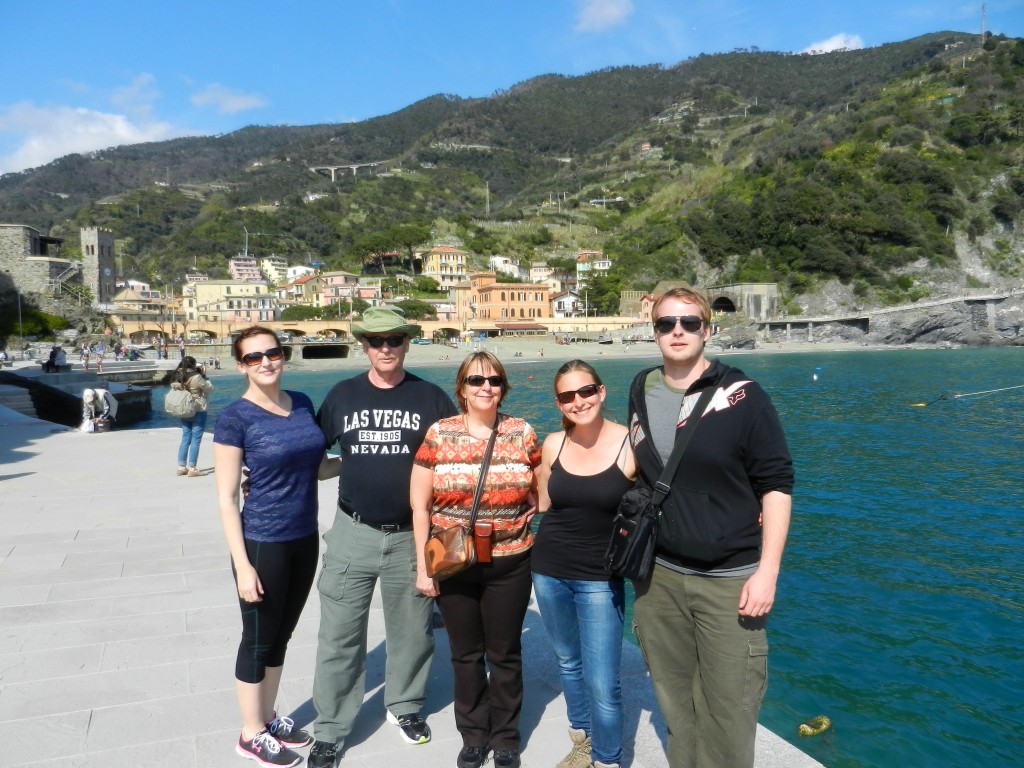
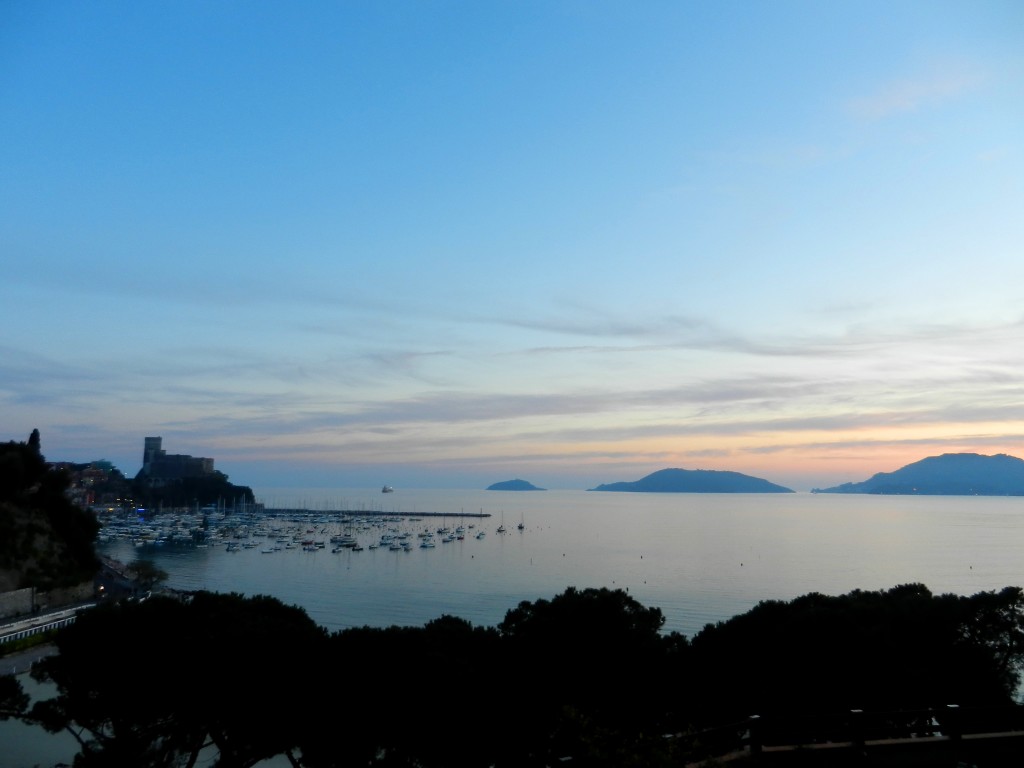






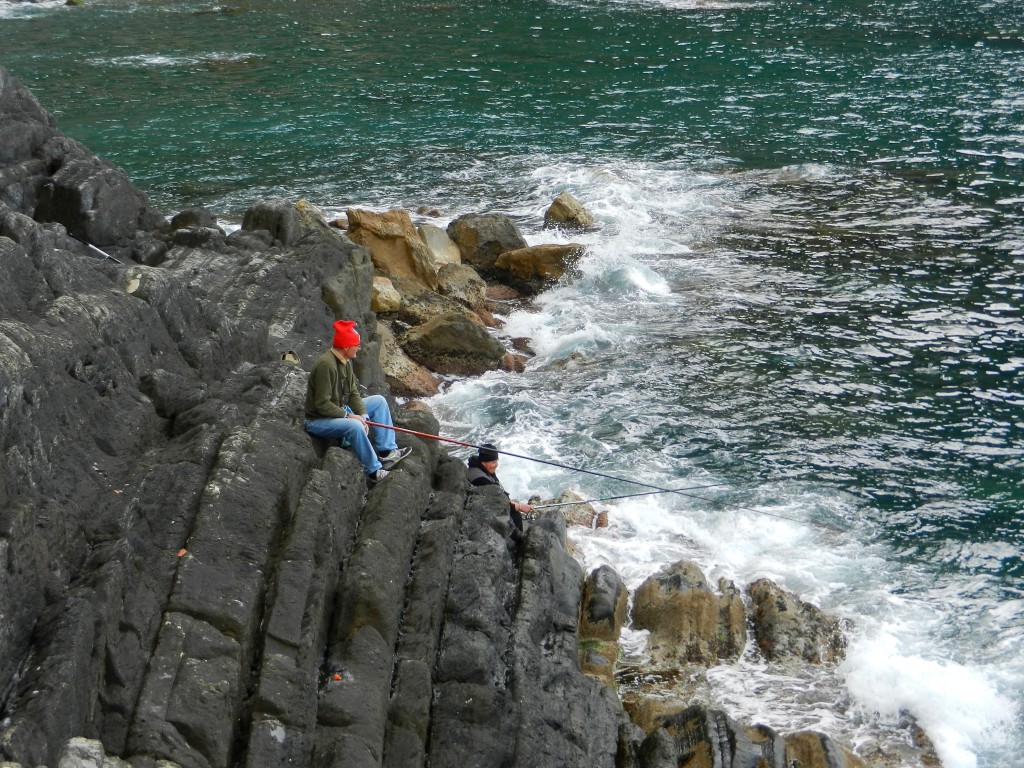









This is an excellent story. I absolutely love your descriptions on Lerici and Cinque Terre. Awesome job!
Thanks, Mom! So many great pictures to choose from, so amazing